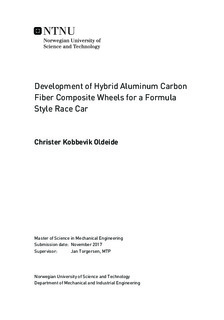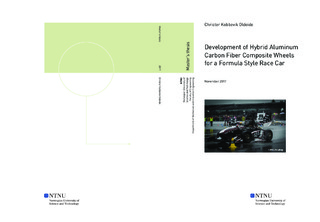| dc.description.abstract | Modern short product life cycles and the necessity to rapidly manufacture components with minimal production needs poses stringent requirements on both time and sophistication of modern product design. Light weight components are more and more in demand, which drives industry to utilize advanced materials like Carbon Fiber Reinforced Polymer (CFRP). The ever-increasing demands of conventional design methods often fail to fulfill the necessary requirements for complex, high performing components. For example, conventional design methods for composites are done manually and often based on experience which is time consuming and can result in non-optimal designs. Using simulation based design (SBD) approaches, this thesis presents FE optimization models that can lead to next generation CFRP designs. A two module wheel is presented consisting of a topology optimized aluminum center for easy machinability and a CFRP rim, for which the layup was optimized in a self-developed evolution based material optimization algorithm. The design considerations and developed algorithm are presented in this thesis as well as the results on optimization with the weight target of 700 g and maximization of the total global stiffness which yielded a deflection of maximum 2.27 mm in cornering at 110 km/h. The optimization was based on two quasi static load scenarios gathered from vehicle dynamic simulations performed by collaborators. The optimized rim shell has an increased specific stiffness of around 45 % and a decreased rotational inertia of nearly 70 %, compared to an aluminum rim shell. The combination of the optimized design and a high quality production resulted in high performing rims that worked well throughout the competitions and during tuning of the car. Mechanical tests on the wheel showed the perfect agreement between the simulation and the experimental results. The largest discrepancy was found in large static loads up to 200 kg, where the discrepancy of the total deformation was 15.6 %.
To the best of the author's knowledge, this work presents the first complete and successful approach towards the parametric material optimization of a CFRP component linked to an entire product development process from the initial design consideration all the way to mechanical testing and application. It is likely helpful to many researchers and developers of next-generation composite designs. | |

